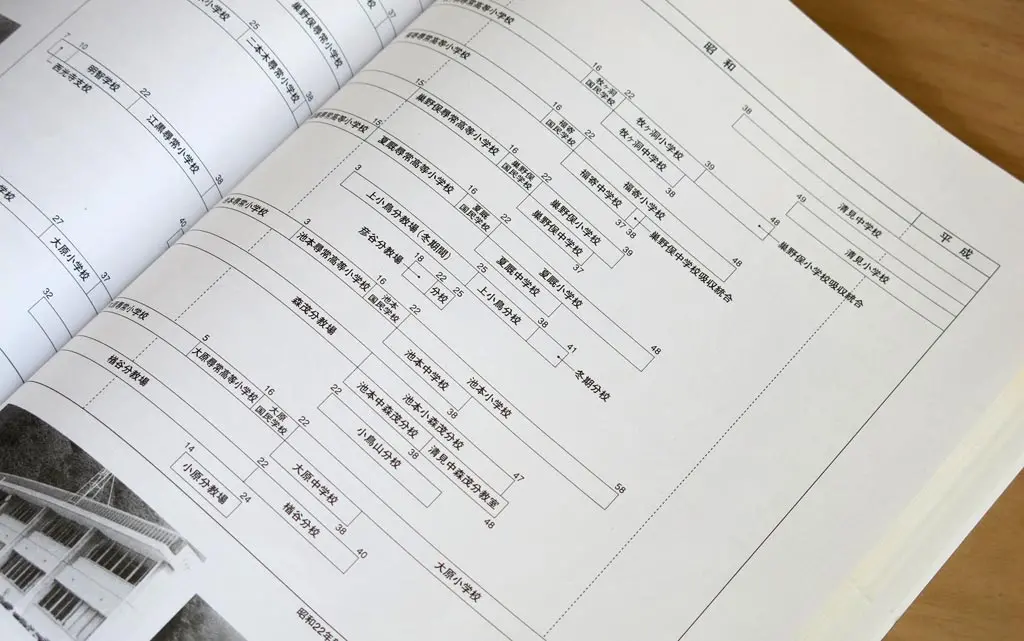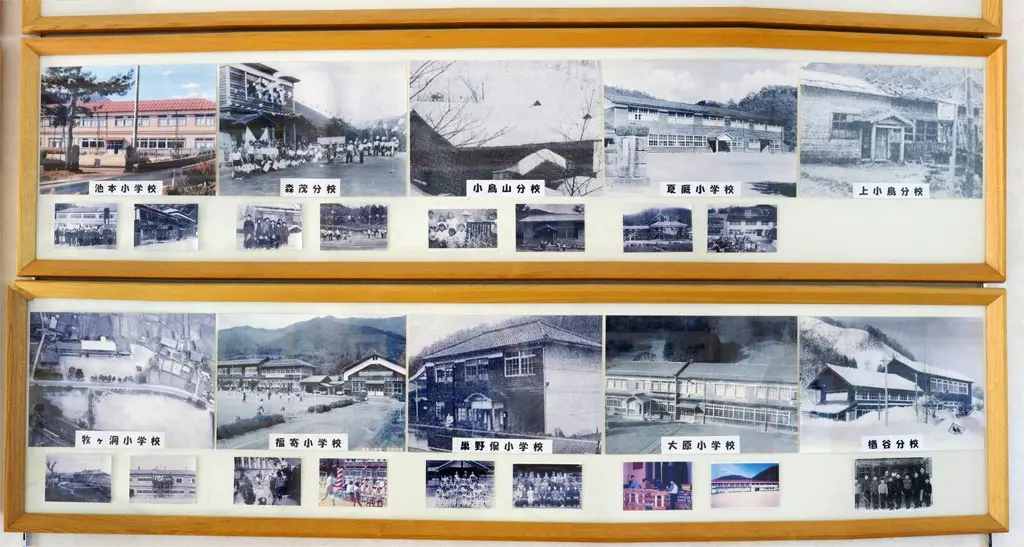I teach at 4 different schools, and the main schools that I teach at are in the village of Kiyomi, which is part of Takayama city. Today, Kiyomi has 1 junior high school, and 1 elementary, but it used to have a whole lot more.
Last year, Kiyomi Junior High School celebrated its 50th year. And this year, Kiyomi Elementary celebrates its 40th. When both schools were opened, it was the consolidation of all the education in Kiyomi into a single building.
Back when I first started at Kiyomi, I spent a few days in the Library, and looked through books in their "local" section. I found a book published by the City Council of Kiyomi that was basically the almanac of the village. It details Kiyomi's agriculture, industry, demographics, and history. There was a section of the book titled わたしの学校 (or "My School") which I found quite fascinated. It had a timeline of all the schools that ever existed in Kiyomi village.
So, I present to you: The History of Kiyomi Schools.
Much of the general historical information was taken from Wikipedia.
The earliest schools in Kiyomi date all the way back near the beginning of the Meiji period. 明治6, 7, and 8 marked the beginning of Kiyomi's 6 major schools. That's 1873, 1874, and 1875.
The Meiji period marked the beginning of Japan's restoration to bring themselves out of their feudal society and into the modern world that was way more advanced than they were. Education was one of the biggest concerns in the country. In 1871, the Ministry of Education was established with a school system closely based on the United States. They created elementary, middle, normal, and university school systems.
Elementary schools taught primary education are were meant to create loyal subjects to the Emperor of Japan. Middle schools were secondary education, and were basically the equivalent of a High School. They were to prepare students to enter Universities, and the Universities were to create students into leaders and modernize Japan. Normal schools were training schools for graduates of middle schools who wanted to become teachers.
By 1900, Enrollment in public schools was 90%, whereas the start of the Meiji era only had 50%.
At this time, the 6 schools in Kiyomi were:
牧ケ洞尋常小学校 / まきがほら / Makigahora
福奇尋常小学校 / ふくより / Fukuyori
巣野俣尋常小学校 / すのまた / Sunomata
夏厩尋常小学校 / なつうまや / Natsuumaya
池本尋常小学校 / いけもと / Ikemoto
大原尋常小学校 / おっぱら / Oppara
Kiyomi had 2 branch schools, too:
森茂分教場 / もりも / Morimo
楢谷分教場 / ならだに / Naradani
Each school (and branch school) is named after the neighborhood it resides it.
The official declaration of a school was 尋常小学校. 尋常 or じんじょう translates as public, or common. 小学校 (しょうがっこ) is elementary school. Branch schools were 分教場 (ぶんきょうじょう).
Higher education became increasingly important as Japan continued to industrialize. In 1904, in Kiyomi, Makigahora, Fukuyori, and Natsuumaya all changed their designation to 尋常高等小学校 adding the 高等 into their names. 高等, or こうとう, stands for "high class." It's also the same word used for Senior High School 高等学校.
In 1907, elementary school attendance was made mandatory. From now on, all children in Japan were required to have 6 years of primary education. Middle schools were only required for students who wanted to go to a university, or normal school.
In 1912, Emperor Meiji passed away, and Taisho became the new emperor. The educational system became even more centralized, but there were plenty of good things that happened. The Extraordinary Council on Education was created in 1917 and set forth many reforms. Many more private colleges were now officially recognized. Subsidies were introduced for poor families so their children could attend schools.
Education started to become much more militaristic, too. And Japan started using a lot of educational ideas from Germany to instill the ideas of nationalism, patriotism, and militarization.
Nationalism and Militarization continued as Japan entered World War II. In 1941, the educational system renamed all of its schools to 国民学校 (こくみんがっこ), which means National People's Schools. This is taken from the German language. Nation People's School translates as Volksschule, which is interesting, too. Schule is School in German. Volks stands for "people of", "national", etc. The name Volkswagen makes a lot of sense now.
The elementary schools now required mandatory military training. The principles of education now taught traditional, political, religious, and moral values. Every day was to serve the Empire of Japan. Every school in Japan turned into a cult of worship building loyal soldiers to die for their country.
In 1945, Japan surrendered to the United States, and the educational system of Japan had collapsed. As the United States occupied Japan and rebuilt it, there were several specific missions sent to rebuild the educational system.
One of these new reforms was to recreate the division between the levels of schooling to resemble the US.
Before now, elementary education was 6 years, secondary education was 3 years, and higher education (university) was 4 years. Only elementary schools were mandatory. The reforms now created two tiers of secondary education: lower and upper, and made lower secondary education mandatory for all students.
This created the following:
小学校 - Elementary Schools - Elementary education for 6 years. (required)
中学校 - Junior High Schools - Lower Secondary education for 3 years. (required)
高等学校 - Senior High Schools - Upper Secondary education for 3 years.
大学校 - University - Higher education for 4 years
The year 昭和22, or 1947, was the first year to follow the new law. This is the system that Japan follows today. Even though Senior High Schools are not required, 94% of junior high school graduates apply and enter high school. And more than 95% of students graduate. (As of 2005)
In 1947, the 6 major schools turned into the following:
牧ケ洞中小学校 / Makigahora JHS+ES
福奇中小学校 / Fukuyori JHS+ES
巣野俣中小学校 / Sunomata JHS+ES
夏厩中小学校 / Natsuumaya JHS+ES
池本中小学校 / Ikemoto JHS+ES
大原中小学校 / Oppara JHS+ES
And there were now 4 branch schools
池本中小森茂分校 / Ikemoto JHS+ES (Morimo Branch)
上小島分校 / Kami Odori Branch School
小島山分校 / Odori Mountain Branch School
楢谷分校 / Naradani Branch School
Even though, the grades were separated, the Junior High and elementary schools still operated in the same building.
I found a book in my local library that listed the attendance for each of these schools starting in 昭和30, or 1955. Combining the attendance at each school, there were 373 junior high school students, and 750 elementary students in that year.
The population of Kiyomi was decreasing, and the world was getting smaller with advancements in automobiles, and other forms of travel.
With the junior high school system in place, all schools across Japan began making separate buildings for junior high students only. In 1962, construction began for a single building in all of Kiyomi that would unite the junior high students under one roof.
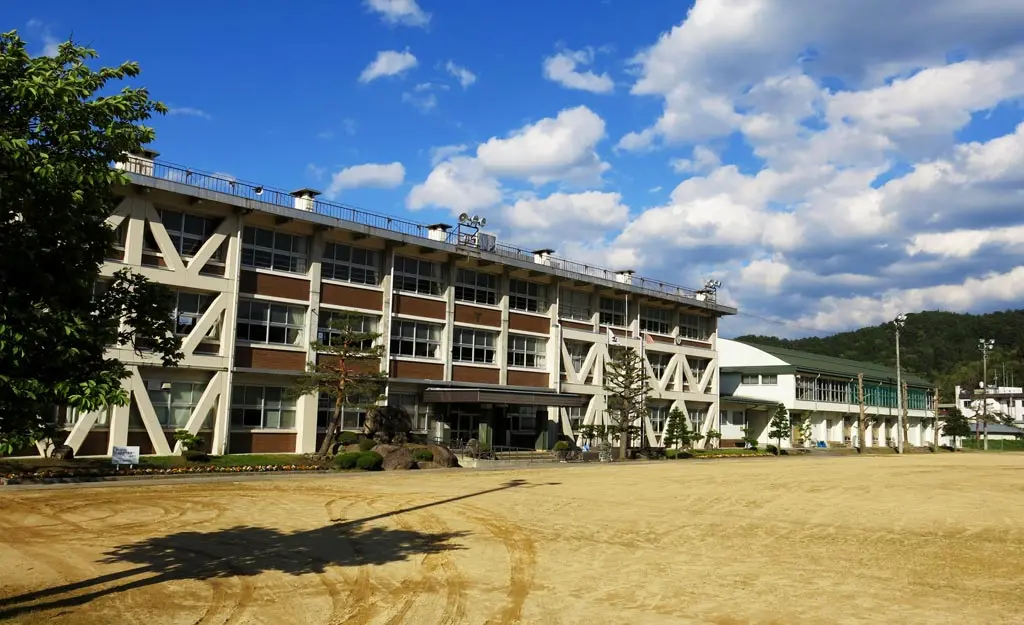
In 昭和38, or 1963, Kiyomi Junior High School 清見中学校 opened for its first school year, and all the junior high school students in Kiyomi village now attended this school. Both Morimo Branch School 森茂分校, and Kami Odori Branch School 上小鳥分校 still served some junior high students, but only in the winter when traveling to Kiyomi JHS was too difficult. For Junior High, both schools operat as branch schools of Kiyomi JHS, whereas for elementary, they operated as branch schools of the nearby elementaries.
Also, Kiyomi JHS had an attached dormitory. During the winter months, and throughout the year, students would be able to live at the school rather than make the journey home.
In its first year, the graduating class of Kiyomi JHS 清見中 was 126 students, which were split between 3 classes at school. The Junior High had an attached dormitory, so students from the distant areas of Kiyomi lived at school for the whole week before returning home for the weekend.
I think it became a real point of pride for Kiyomi when the junior high school opened. For the first time in its history, all the village's students attended the same school, and had classes together. It really brought everyone together, and became a symbol for the community of Kiyomi.
A few years after Kiyomi JHS opened, the lingering branch schools began closing and filtering their students into the junior high school, and existing official nearby elementary schools. Though, this was also more likely because the more remote regions of Kiyomi were no longer self-sustaining, and people were moving into the more populated areas.
The Sunomata ES 巣野俣小 building closed in 1965, and all their students now went to Fukuyori ES 福寄小. And with the closure of Sunomata, the Naradani Branch School 楢谷分校 closed, too. Any students in Naradani probably just went to Oppara ES 大原小.
The Kami Odori Branch School 上小鳥分校 changed it's name to Winter Branch School 冬期分校 in 1965. 冬期 or とうき is Japanese for Winter Term, so I'm guessing this school was only used in the winter to relieve the students of the dangerous daily journey to school. It stayed open for another 3 years, and closed for good in 1968.
Also, in 1968, the Odori Mountain Branch School 小鳥山分校 of Ikemoto ES 池本小 closed.
Kiyomi now had 5 operating elementary schools, and one distant branch school (Morimo 森茂分校). Until…
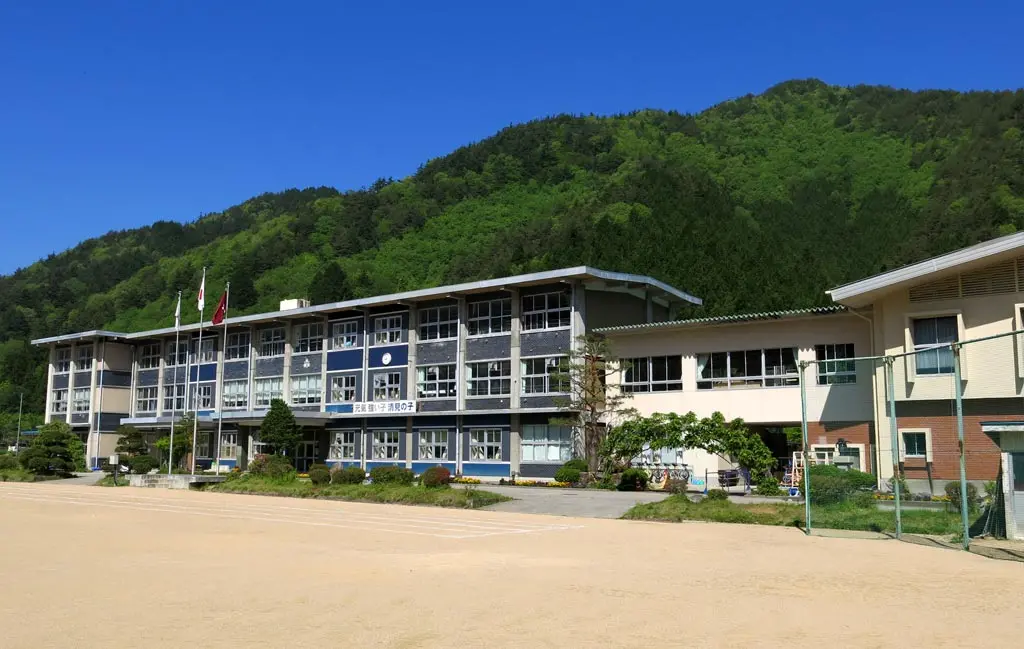
In 1974, or 昭和49, as the population of Kiyomi continued to decrease by the younger generation moving away to more prosperous areas of Takayama, construction of Kiyomi Elementary School 清見小学校 was complete. Makigahora ES 牧ケ洞小, Fukuyori ES 福寄小 both closed and their students now attended Kiyomi ES. Natsuumaya ES 夏厩小 closed as well, and those students filtered into Ikemoto ES 池本小.
The two most distant schools, Oppara ES 大原小 and Ikemoto ES 池本小, continued to operate after Kiyomi ES was open.
The Morimo Branch 森茂分校 finally closed, too, on the eve of Kiyomi ES's opening. I think the final remaining residents of that neighborhood finally moved closer in Kiyomi, or another neighboring area. Which left Morimo completely uninhabited.
10 years later, in 1984, Ikemoto ES closed its doors, and its students went to Kiyomi ES. And then, finally, in 2003, Opara ES closed, too.
And that brings us to today. Since then, Kiyomi village has only two schools, Kiyomi JHS 清見中 and Kiyomi ES 清見小. Both of which all students in Kiyomi attend.
It's really hard to believe that Kiyomi JHS could actually hold 126 students in each class. Today, each class has 23 to 27 students. The population decline in Japan is very real, and it's very apparent when you start viewing the historical records in the schools. Each year, graduating classes get a little bit smaller, and a little bit smaller. Then those schools are closed, and students are filtered into the larger nearby schools.
At Kiyomi elementary, there are photos of the 10 schools mentioned above in the main entrance of the school.
From top to bottom, left to right, we have:
Ikemoto 池本, Morimo 森茂, Odori Mountain 小鳥山, Natsuumaya 夏厩, Kami Odori 上小鳥
Makigahora 牧ケ洞, Fukuyori 福寄, Sunomata 巣野俣, Oppara 大原, Naradani 楢谷
Even though the schools were closed, some the building were reused and repurposed by the government. In fact, 4 of the former elementary school building still stand today.
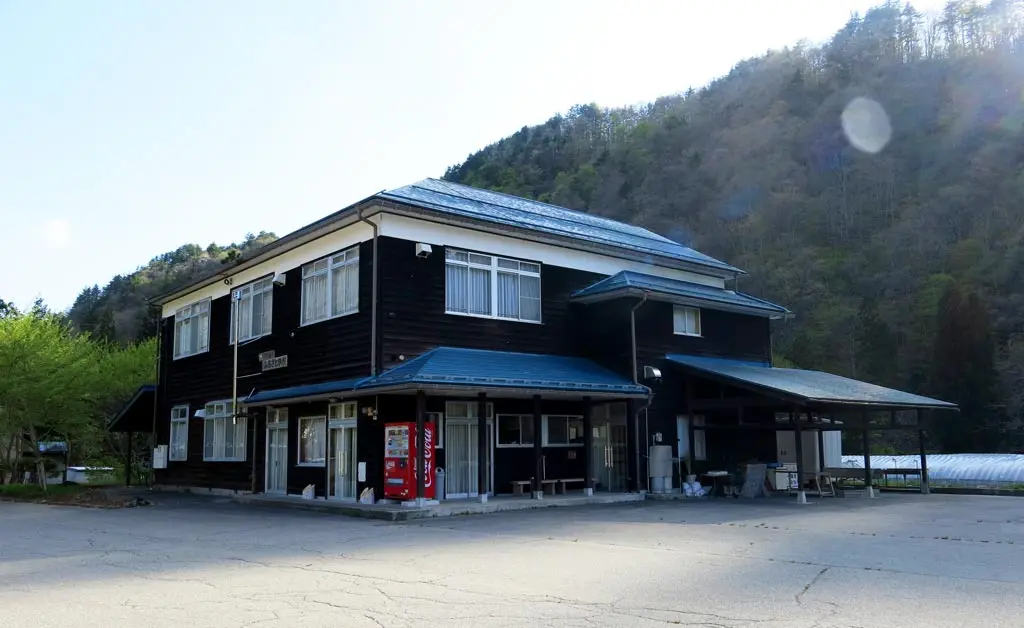
Above is the building that once was Sunomata elementary school. It's now the ふるさと学校. Gakko (学校 / がっこ), again, means schools. Furusato (ふるさと), in short, means old, but it has more context than that. It's "old" as in "one's birthplace", or "one's native heritage." It's basically a historical part of the village that sculpted it into what it is today.
It's now a personal experience facility 体験施設. It's a place someone could rent out and have a weekend retreat, or a seminar course over several days. Kiyomi JHS's 1年生 class spent a few days here "bonding" with their new homeroom teachers.
This is located directly on Seseragi road, and it's about 30 minutes away from Kiyomi JHS, which is about half the length of Kiyomi village.
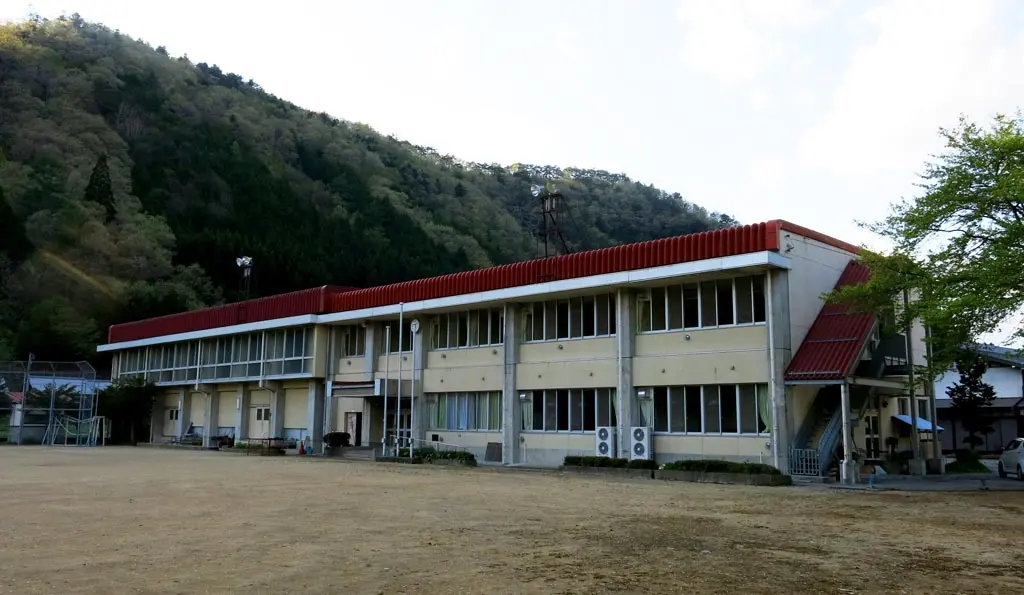
This is the old Oppara elementary school. It is now the おっぱら体験|自然センター, or the Oppara Personal Experience (体験 / たいけん) and Nature (自然 / しぜん) Center.
This is another personal experience facility. When I arrived to take photos, some of the local elderly people were setting up for their gate ball tournament.
This is located on the southern most end of Kiyomi, and takes about an hour drive by car from Kiyomi JHS. A few students live down here, too, so they make this commute every day.
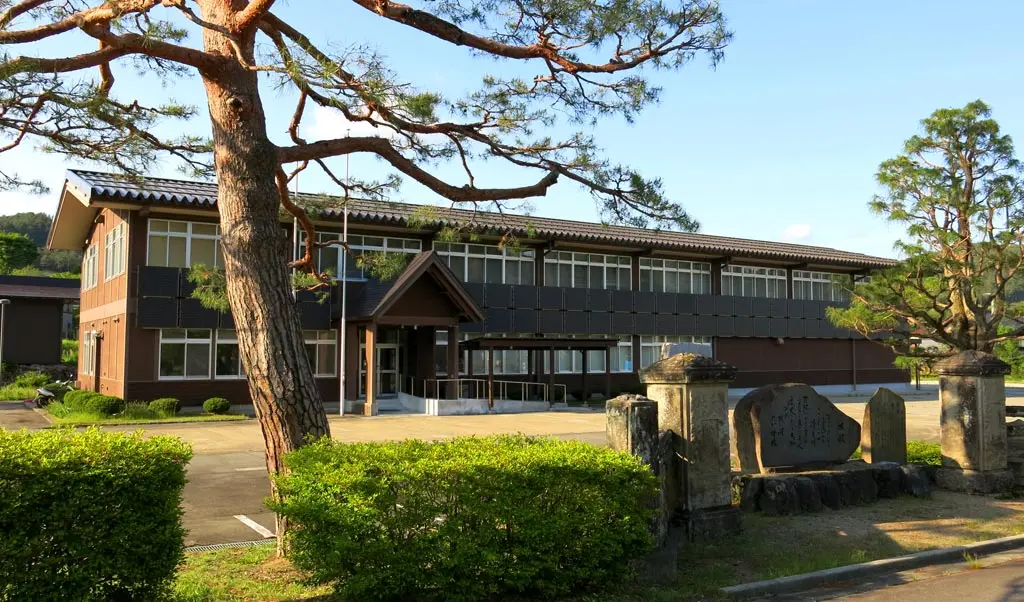
The old Makigahora elementary school is probably the easiest of the old schools to locate. It's just a few blocks away from Kiyomi JHS near the entrance to the highway.
Now, it's the 高山市公文書館, or the Takayama City Public Records Office (公文書館 / こうぶんしょかん). So, there won't be any weekend retreats in this building.
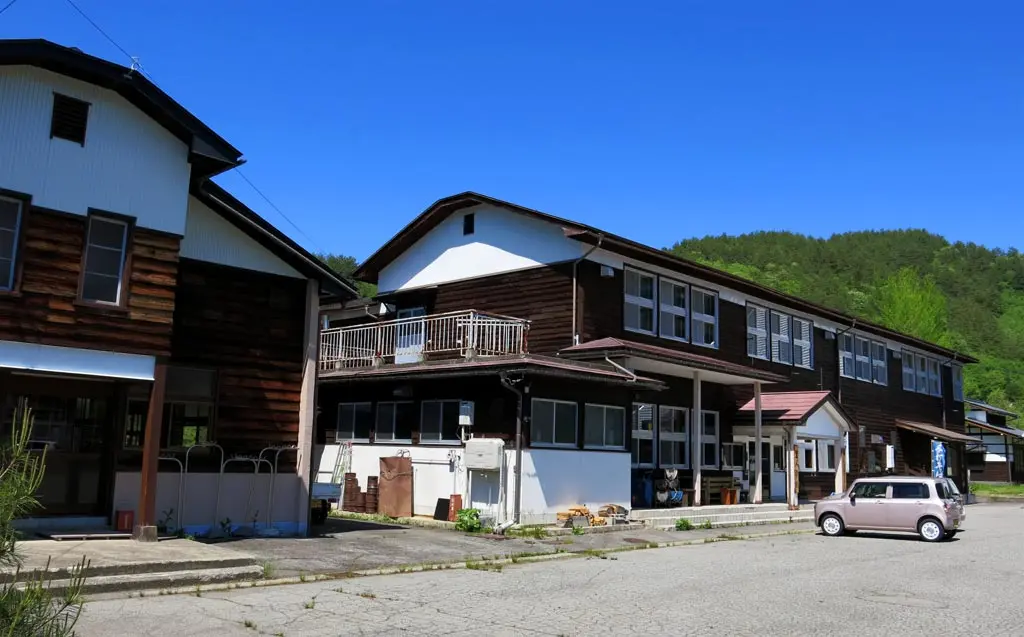
Natsuumaya elementary school still exists, too. It's now the 里人学校, and it's another personal experience "weekend retreat" facility. The 2年生 at Kiyomi JHS studied here as part of their Work experience program.
Much like Furusato, Satobito (里人 / さとびと) refers to those old times of years past. 人 is the Japanese word for person, so Satobito refers to a person of those old times. A villager, or townsfolk.
It's also pretty easy to find. It's right next to the Planetarium near the Highway and Tollway interchange.
The other two main elementary schools, Ikemoto 池本, and Fukuyori 福寄 no longer exist. There were torn down, or destroyed after their closures. But the large dirt school grounds still exist in the exact locations were the schools were all those years ago. Now there are new buildings at the location in their wake.
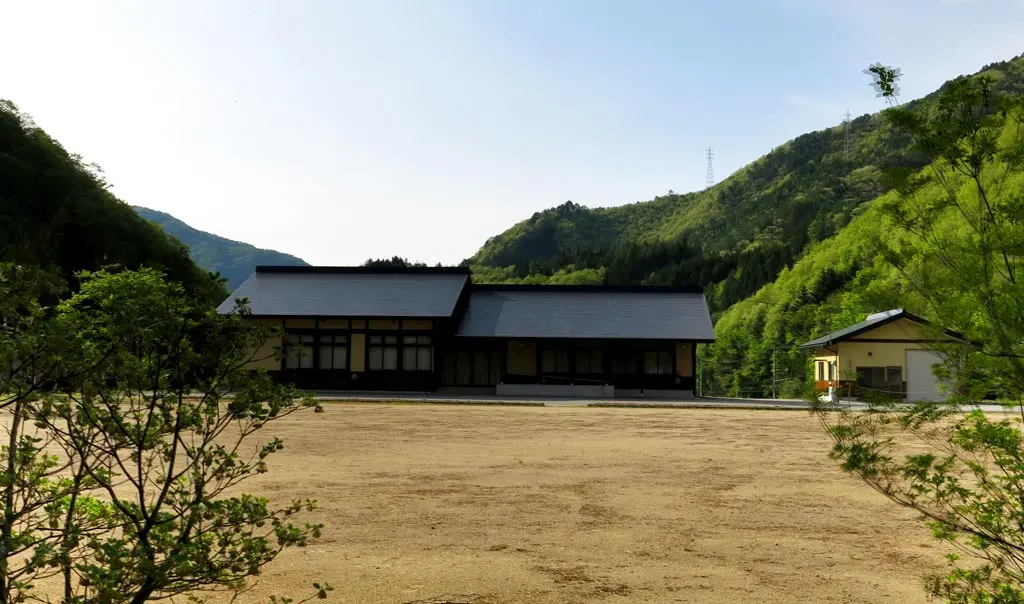
The Ikemoto neighborhood is north of Natsuumaya, but still very west in Kiyomi's territory. I don't know when Ikemoto elementary school was torn down, but it happened sometime within the last 30 years since it's closure in 1984. The ground still exists today, as does the original head stone for the school, which recites the school's purpose and motto.
Today, in its place, there's a building called the Yamabiko no Ie やまびこの家, or Mountain Person's House.
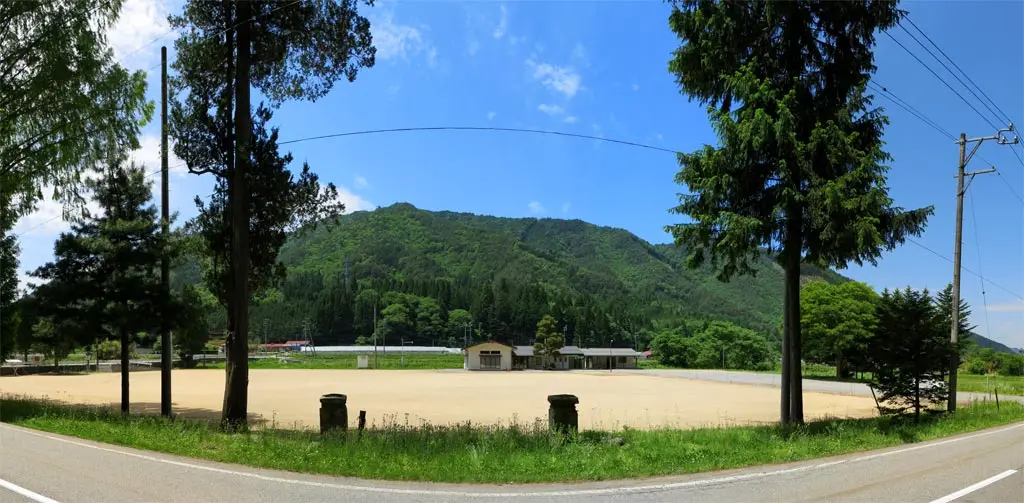
Fukuyori elementary school, along with Makigahora, were the two most central elementary schools. They both closed when Kiyomi ES 清見小 opened in 1974. Fukuyori neighborhood is an extra 5 minute drive south from Kiyomi ES. This location is directly on the side of Seseragi road, and is easy to find due to its dirt school ground. The stone gates are still there, but the name plates were removed.
Today, it's school ground is a baseball field that anyone could play on. And next to one of the dugouts is a stone post that says Fukuyori ES 福寄小. There's a building, too, named the Fukuyori Meeting Place 福寄会館. On the side of the building, there's a sign that says in 2004, Typhoon 23 flooded the entire region up 1 meter. Maybe this is why the old Fukuyori ES was torn down.
The 6 former elementary schools of Kiyomi are all pretty easy to find. They're located directly on the side of the main road through the neighborhoods.
The old branch schools are a much different story.
…to be continued.
